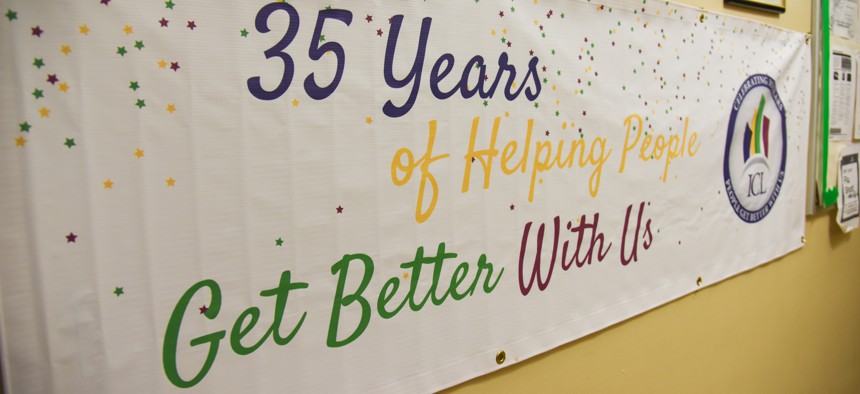Homelessness
Homeless parents entering the shelter system looking to reunite with their children have got a long hard road
An analysis by the Institute for Community Living details the problems that plague reunification.

A staff member at the Institute for Community Living. Photo courtesy of Institute for Community Living
Amalia Montanez was separated from her daughter when homelessness forced her into New York City’s shelter system. Her daughter, at the same time, was placed into foster care. Seven years later, Amalia and her daughter were eligible for reunification. However, the process to be reunited has proven difficult.
While Montanez has gone through the proper channels and been offered stable housing several times, none of the apartments have been large enough to accommodate both her and her daughter. Even if the apartment was large enough, her daughter would not be allowed to stay with her. Amalia has worked on the reunification for months, but still has not been reunited with her daughter.
“I want to be with my daughter 24/7, but I can't. I miss doing stuff with her. I can’t do the little things that I used to do with her because she's not with me all the time. She's growing up so I'm missing milestones that she's reaching.” Montanez told New York Nonprofit Media.
The Institute for Community Living, an organization that helps New Yorkers with behavioral health challenges, released a policy paper titled “Barriers to Reunification,” detailing the problems faced by parents like Amalia. The paper includes solutions that can be implemented by city government to improve the systems and make reunification easier for these parents and their children.
Among the challenges are a lack of access to housing that works for parents and their children, lack of a mechanism to track how many parents are dealing with this issue, and the stigma against individuals with mental health challenges when trying to reunite with their children.
The ICL paper highlights the organization’s Emerson Family Center, a New York-based program providing services to adults with mental health challenges, as well as housing and restorative services that have led to successful reunifications. Seventy four percent of the families that have transitioned out of Emerson remain unified, and more than a third of the families who have transitioned out of the program move into their own homes. Jody Rudin, president and CEO of ICL, expressed pride in the program and its offerings. “Our program provides a full range of social services on site and we think we've got this great model that should be replicated.”

The policy paper offers parents several solutions.
The first provides housing quickly to parents who want to be reunited with their children. The pathway for this to happen includes making the permanent supportive housing application rules less rigid, allowing more options than “individual” or “family” to accommodate the different kinds of family situations, including reunification. The paper also requests that the Department of Social Services revise the housing voucher process to allow parents to qualify for larger apartments to reunite with their children, even if they are leaving a single adult shelter.
To ensure early identification of parents who want to be reunited with their children, communication is streamlined between the Department of Homeless Services and the Administration for Children’s Services, including a tracking mechanism for data sharing between the two agencies.
The final recommendations put forward by the ICL include establishing a specific funding stream for family supportive housing models through city agencies, and the housing models incorporating trauma treatment, parental skills, and child adjustment care.
“The outcomes are better across the board when we can keep families together. We should invest more in doing that proactively.” said Rudin, when discussing the solutions provided in the ICL policy paper.
For more on the policy paper, read more here.
Correction: An image used in an earlier version of this story misidentified a staffer at the Institute for Community Living.
NEXT STORY: Advocates rally for “How Many Stops” act
